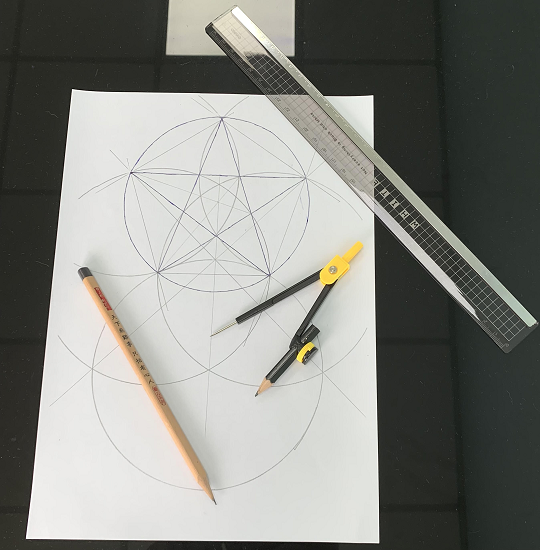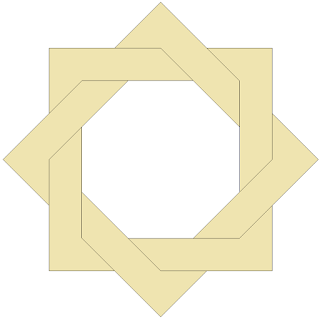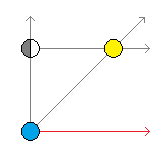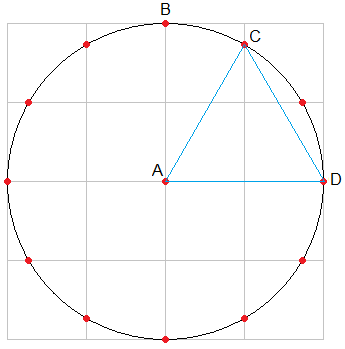About six years ago I had a memorable lunch conversation with a couple of friends who were in the process of working on a new symbol/logo for The Church of Jesus Christ of Latter-day Saints. They told me that the symbol needed to emphasize the importance and centrality of Jesus Christ within the Church. It also needed to speak a universal language applicable to people around the world through iconography and symbolism. From a cross, star of David (6-pointed star), squared circle, pentagram (5-pointed star), and seal of Melchizedek (8-pointed star) just about everything was considered. I provided them with a few resources on sacred geometry and symbols.
Tam multa, ut puta genera linguarum sunt in hoc mundo: et nihil sine voce est.
Wednesday, December 7, 2022
More weird student telepathy/coincidences
Monday, June 21, 2021
Using daylight phases of the Moon to calculate the relative distance of the Sun and the Moon
As everyone knows, the Moon is sometimes visible during the day, while the Sun is also in the sky. Suppose you look up sometime during the day and see a half-moon in the sky. The Sun is also in the sky, separated from the Moon by 45 degrees of arc. What can you conclude from this?
In the above diagram, the vertical ray (using that word in the geometric, not the optical, sense) represents all possible locations of the Moon. (Since we are supposing we do not know how far the Moon is from the Earth, it could in principle be at any point along the ray.) The diagonal ray represents all possible locations of the Sun when it appears from Earth to be 45 degrees distant from the Moon. The horizontal ray extending out from the Moon represents all possible locations of the Sun which would cause a half-moon to be visible from Earth. Therefore, if you see a half-moon 45 degrees from the Sun, you can conclude that the Sun is 1.414 (the square root of two) times as far from the Earth as the Moon is -- and that therefore everything you know about astronomy is wrong, since astronomers tells us the Sun is approximately 395.5 times as far from Earth as the Moon is.
If that figure is correct, what should be the angular distance between the Sun and a half-moon? Well, it must be less than 90 degrees, since the red ray (representing the Sun at 90 degrees from the Moon) is parallel to, and thus never intersects, the half-moon ray. But, since 395.5 is a very large number, it must be only a little less than 90 degrees. I've forgotten all my trigonometry, so I'll leave the exact figure as an exercise for the reader.
Update: I've just realized the flaw in this reasoning -- that it applies only when the Moon is directly overhead. The angular elevation of the Moon must be included in the equation, not only its angular distance from the Sun.
Update 2: No, on second thought, I think I was right the first time.
Sunday, November 24, 2019
Proof that a 4-by-4 grid divides a circle into 30-degree arcs
AC is equal in length to AD, since they are radii of the same circle. C is on the vertical line that bisects AD. Therefore, CD is the mirror image of AC, and the triangle ACD is equilateral. Therefore, the angle formed by AC and AD is 60 degrees, and that formed by AB and AC is 30 degrees.
Similar triangles can be made for all the other red points, showing that they are located at 30-degree intervals.
No other grids (3-by-3, 5-by-5, etc.) divide a circle evenly like this.
Another mathematical puzzle: Why does this work?
Create a 4-by-4 grid of squares and inscribe a circle in it. The lines of the squares will intersect the circle at 12 points, which appear to be equally spaced at 30-degree intervals around the circumference of the circle. You can then connect selected points to create a triangle, hexagon, or dodecagon.
(The ancient geometers used to take it as a challenge to construct various polygons using only a square and compass. I suppose the modern equivalent would be: Using only a crappy graphics program like MS Paint, construct . . . .)
I can't remember how I happened to discover this -- just one of those happy accidents, I think. I also can't be sure, absent any mathematical proof, that the points are really evenly spaced at 30-degree intervals. (If not, they are certainly close enough that the trick can still be used to create polygons that seem to the human eye to be perfectly regular.) However, I strongly suspect that they are perfectly regularly spaced, because that's just how math is.
The last mathematical proof I embarked on, regarding congruence patterns in triangular numbers (qv) was a matter of straightforward number theory, requiring only everyday algebra, which is why I was never really in any doubt as to my ability to solve it. I am much less confident of my competence in this case, though, being innocent even of basic trigonometry. (Obviously somebody invented trigonometry without having been taught it, and I'm sure I could do the same if push came to shove; the question is whether or not I want to invest so much time and thought in a problem which has elicited only my passing curiosity.)
Ace of Hearts
On the A page of Animalia , an Ace of Hearts is near a picture of a running man whom I interpreted as a reference to Arnold Schwarzenegger....

-
Following up on the idea that the pecked are no longer alone in their bodies , reader Ben Pratt has brought to my attention these remarks by...
-
1. The traditional Marseille layout Tarot de Marseille decks stick very closely to the following layout for the Bateleur's table. Based ...
-
Disclaimer: My terms are borrowed (by way of Terry Boardman and Bruce Charlton) from Rudolf Steiner, but I cannot claim to be using them in ...









